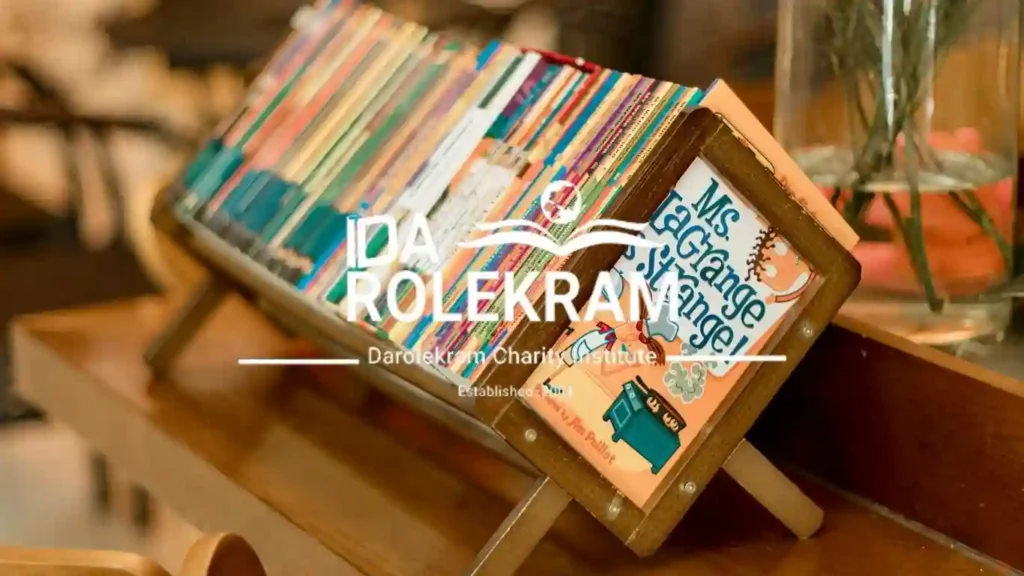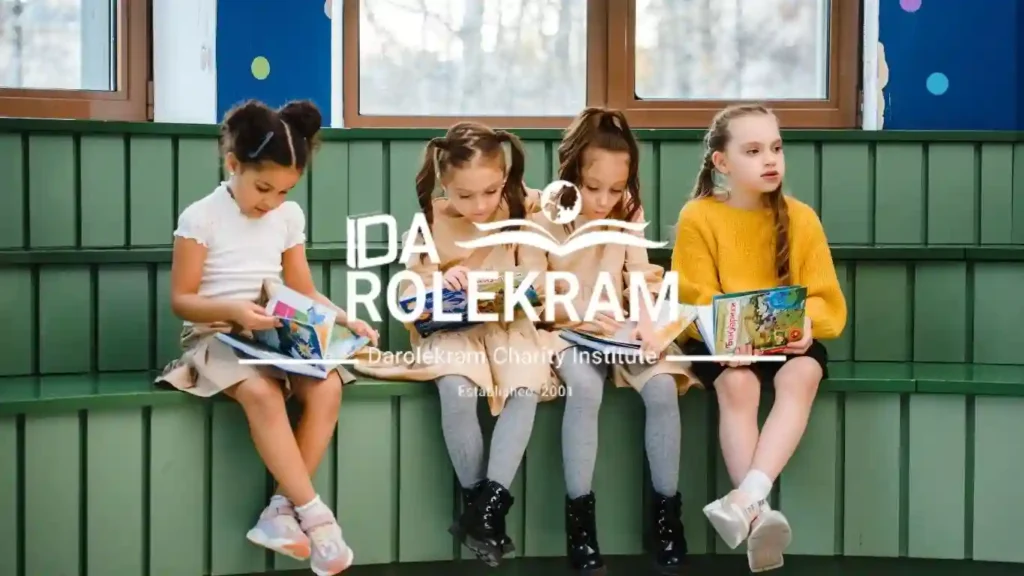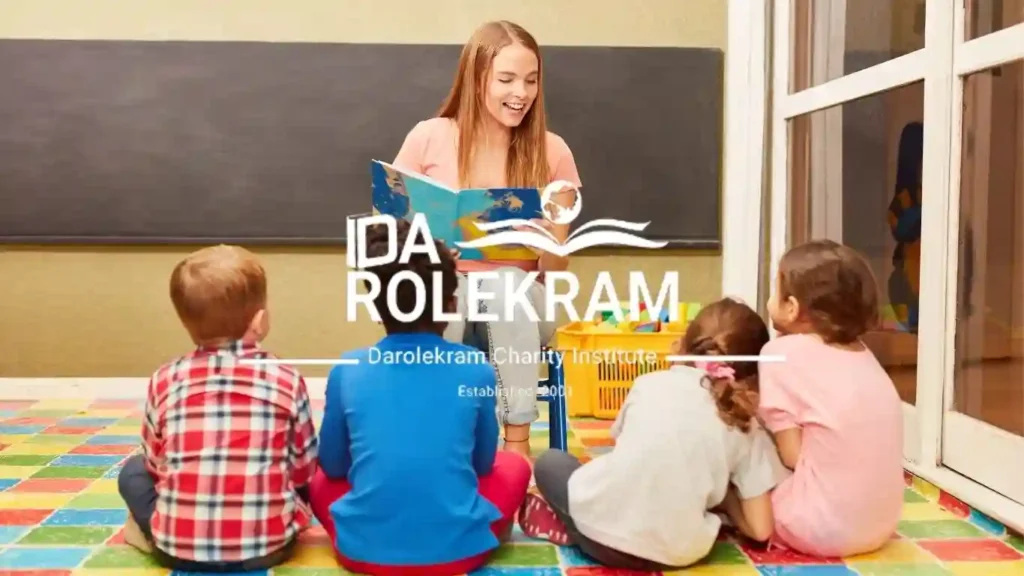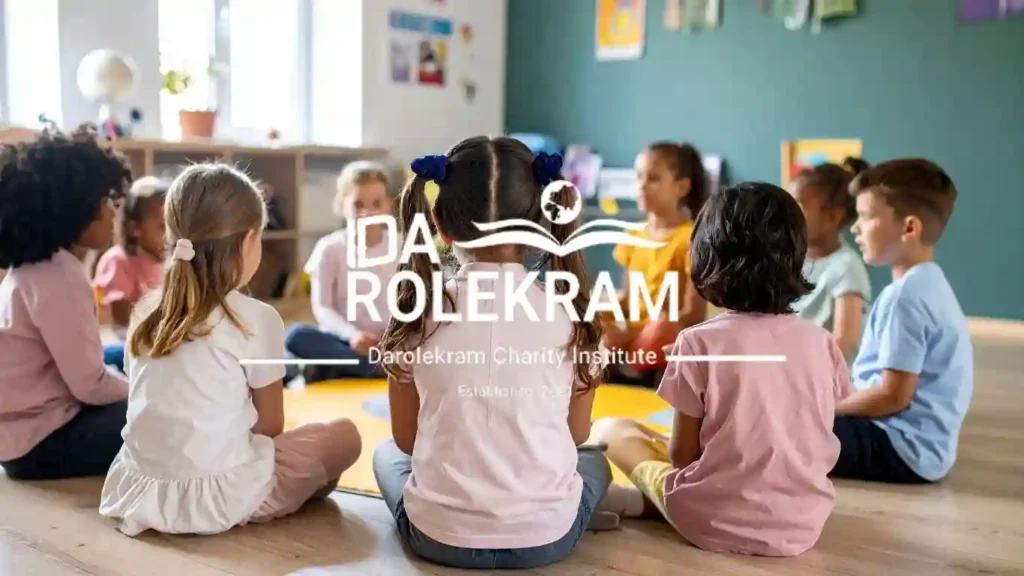The non-profit sector in Iran is an important part of tackling social issues and creating sustainable community development throughout the country. This paper provides a robust account of the organization, functioning, and effect of Iranian NGOs, and addresses their role and contribution to social development in the sectors of: education, social welfare, and empowerment. An exploration is undertaken of the legal framework that governs non-profit activity, and the opportunities and challenges experienced by NGOs which have been launched to create social cohesion and human development.
The paper evaluates how Iranian non-profits operate as self-determining institutions within the context of complex political, economic, and social landscapes while remaining committed to their social mission and compassionate accountable to their communities. An examination of models, funding, and measurement of impact is then undertaken to demonstrate how non-profits establish durability for social change, while being cognizant of their cultural values and the needs of local people. In this evaluation of the frontiers of NGOs, we highlight how Iranian NGOs are informed by a lineage of traditional charitable practice and use contemporary approaches and models for social development within civil society. We then examine how Iranian NGOs marry short-term charitable acts with long-term organizational or systemic non-profit management.
What Are Non-Profit Organizations in Iran?
Non-profit organizations in Iran, often referred to as NGOs, play a vital role in filling social and economic gaps that government or private institutions cannot fully cover. These organizations are established to serve the public interest rather than to generate profit, and they often focus on education, healthcare, poverty reduction, and community development.
Definition and Role
In Iran, a non-profit organization is legally recognized as an institution that channels financial and human resources toward solving social issues. These NGOs act as a bridge between donors and communities in need, ensuring that charitable contributions are directed toward meaningful and sustainable projects.
For example, Darolekram Foundation is a well-known Iranian non-profit dedicated to providing long-term scholarships and support for underprivileged students. It illustrates how NGOs can directly change lives by ensuring access to education for children who would otherwise face dropping out of school.
Legal Framework
Iranian NGOs operate under national laws that require them to be registered, maintain transparent financial practices, and report their activities to relevant authorities. While this framework ensures accountability, it also presents challenges, especially when organizations work with international donors.
Key Areas of Focus for Iranian Non-Profits
Iranian non-profit organizations operate in diverse fields, but several areas stand out as priorities:
Education and Scholarships
Education-focused NGOs work to keep children in school by covering tuition, providing supplies, and offering mentorship. Darolekram is a leading example, ensuring students from low-income families have the chance to continue their education.
Healthcare and Community Well-Being
Some NGOs provide medical assistance, fund hospitals, and organize health campaigns, especially in rural areas where access is limited.
Environmental and Cultural Preservation
Non-profits also work to protect Iran’s cultural heritage and environment, raising awareness about sustainability and supporting conservation projects.
The Darolekram Foundation: A Model of Excellence
The Darolekram Foundation is a shining example of the institutional excellence possible within Iran’s non-profit sector and exhibits first hand the effects that principled decision-making, organizational transparency, and full-scale programming can have to achieve actual social impacts sustained over decades. As a non-denominational, cross-faction organization focused on supporting at-risk students, Darolekram has developed operational models and governance systems that can serve as reference points for the non-profit sector — principled organizational leadership, and increasing organizational performance accountability to the donor community, including through the establishment of committed action plans and sustained sharing of current data on student support costs and total assistance and support provided.
Darolekram’s approach to organizational development is exceptional for their understanding of stakeholder expectations, and the needs of beneficiaries, at-risk students, and developing approaches which provided programs that achieved outcomes consistent with cultural values attached to the targeted asymmetries involved in education and fully reported to the public: the commitment to value, human dignity and transparency meant that the organization was in a position to legitimize trust with multiple external constituencies while determining its major focus of educational support.
The Darolekram Foundation has demonstrated that the rewards of institutionalism require commitment, commitment and attention to detail, supporting charitable efforts for at least eleven thousand students, and more than eight thousand currently supported students. Their systematic organization and continued delivery of differed Institutional accountability has allowed Darolekram to create sustained impact areas of social change.
For organizations wanting to enhance their own operations and ultimately their social impact, an examination of Darolekram’s governance, programming, and stakeholder engagement will reveal a critical path to engaging with best practice in non-profit management in the Iranian context. Their model illustrates how excellence in organizational development can stimulate sustained social impact that ultimately benefits individuals, families and communities across multiple generations.
Challenges Faced by Non-Profits in Iran
While NGOs in Iran are impactful, they also face significant challenges:
Funding Limitations and Transparency
Access to consistent funding is difficult, especially during economic instability. Transparent reporting is essential to build trust with donors both inside and outside the country.
Sanctions and International Restrictions
Global sanctions often make international donations complicated. NGOs like Darolekram adapt by offering secure, legal channels for donors abroad.
Building Donor Trust
Public skepticism toward charities means NGOs must maintain strong accountability and publish measurable outcomes to ensure credibility.
Successful Examples of Iranian NGOs
Despite challenges, many Iranian non-profits have built strong reputations:
Darolekram Foundation – Focused on education, scholarships, and holistic support for children.
Health-Focused NGOs – Supporting hospitals, clinics, and disease-prevention programs.
Grassroots Initiatives – Local groups working on literacy campaigns, vocational training, and women’s empowerment.
These organizations show that, with the right support, NGOs can create sustainable impact.
How to Support Iranian Non-Profit Organizations
There are many ways to support NGOs in Iran, even if you cannot donate money directly.
Safe Ways to Donate
Use official websites and verified platforms that comply with international regulations. NGOs like Darolekram provide secure donation channels to ensure funds reach the intended students.
Volunteering Opportunities
Skilled professionals and volunteers can contribute time and expertise, whether through teaching, mentoring, or providing professional services.
Non-Financial Support
Spreading awareness about Iranian NGOs, sharing their stories, and amplifying their mission online helps expand their donor base and global visibility.
The Landscape of Iranian Non-Profit Organizations
Non-profit space in Iran includes a variety of organizations ranging from ancient religious charity groups to recent civil society organizations, including formal organizations designed to implement programs or services in education, health care, environment and social welfare. Non-profits operate in a complex regulatory domain that weighs government monitoring and oversight of their operations with the autonomy of a non-profit organizations and can be fraught with challenges and new opportunities for creating social impact. The best way to understand this environment is to look at traditional practices of charitable giving as well as modern, systematic and organized ways of impact realization.
Iranian non-profit organizations leverage cultural and religious traditions based on community obligations and responsibilities, social justice and charity which highly influence the social engagement role of religious groups and charities. For example, the Islamic notion of zakat and sadaqe provides the conceptual basis for organized charitable conduct, along with the Iranian cultural expectation of hospitality and support in the community that coexist. The lack of awareness of the existing tradition of organized charity or social engagement in Iran is also complicated by the highly prescriptive management principles of today’s “modern” non-profit sector that has emerged in the last few decades. In a way, contemporary Iranian non-profits apply the rich and complex traditions in socio- charitable work reflected in Iranian culture and practice transforming them into modern organizational structure, management systems, impact measurement, and systematic planning to meet their ever-changing and sustainable organizational outcomes and internal development purposes.
As in other non-profit environments, the Iranian non-profit regulatory framework is informed by local political and social realities; organizations are asked to attest to the values described in their mandate and the values they demonstrated in their methods of operation. This means that while the organizations can demonstrate national values, they can become owners of their own programs and services — the balance affords opportunities to maximize innovation in programming and service delivery while maintaining mandates related to social development. We can find examples of innovative growth over many years and decades in organizations like Darolekram suggesting how to better work through regulatory frameworks.
Organizational Structures and Governance Models
Good governance establishes the backbone of sustainable non-profit governance in Iran, whereby non-profit organizations need to balance multiple stakeholders’ interests and maintain clarity regarding each organization’s mission and operational accountability. Iranian non-profits are governed through many different types of structures from the traditional board-based governance to a flexible collaborative governance structure that allows for community participation and beneficiary engagement. Structures for governance need to take into account regulatory compliance and the culture of the organization and govern an entity in such a way that ensures informed decision-making and strategic planning.
The top Iranian non-profits are more sophisticated in governance. They balance formal oversight process together with cultural responsiveness and stakeholder engagement. Board members generally possess expertise in relevant program areas, financial processes, and community relations. The operational leadership manage program functions, having space and time to think about continuous improvement. Overall, the division of these functions allow for executive leaders to focus on strategic priorities while ensuring that programs are implemented in service of the community and clients.
Iranians non-profits have made great strides in the last couple of decades on transparency and accountability mechanisms. This has coincided with the demands and expectations of donors and a commitment to accountability within the organizations themselves. Most organizations have established comprehensive reporting mechanisms, independent audits, and ongoing stakeholder feedback mechanisms that provide an avenue for improvement and strengthen relationships with communities, donors, and regulatory authorities. Organizations usually go beyond the minimum requirements imposed by the regulatory systems. This is reflective of the internal ethos of the organization towards excellence and social good-making.
Funding Mechanisms and Financial Sustainability
Financial sustainability represents one of the greatest challenges for Iranian non-profits while at the same time requiring the organization to run multiple revenue streams to remain independent and focused on their mission. Through a combination of individual donors, institutional grant programs, fee-for-service work, and social enterprise activity, the successful non-profits are able to create stable funding bases from which programs can develop over time along a continuum and organizations can grow. Diversifying funding will help organizations lessen impact of dependence on a single source of funding, while increasing organizational resilience.
For organizations to develop sustainable funding models requires, sophisticated financial management competencies, and strategic planning processes demonstrating how resource development rollout aligns with program priorities. More and more Iranian non-profits are utilizing a professional fundraising approach, donor relationship management systems and population impact measurement toolkits illustrating how they accomplish unique results for potential benefactors. As organizations build their capabilities to compete for the limited funders, they can still continue to deliver on their purpose through official independence and focused mission.
Some examples of innovative financing approaches emerging within the Iranian non-profit sector include the development of social enterprises, partnership based funding models and community investment vehicles of an attractive revenue-generating asset while advancing the mission of the organization. These alternatives are representative of how resource development can be creative while maintaining in focus financial sustainability without compromising social impact and community accountability.
Educational Non-Profits and Social Development
Educational non-profits play a unique and highly important role in Iran’s social development system, filling crucial gaps in educational access, quality, and equity, simultaneously adding to the larger goals of human capital development and social mobility. Non-profit organizations focus on all aspects of education, from early childhood development right through post-secondary, and adult learning, with innovative efforts in alternative educational methods, student support and community engagement to work in conjunction with formal systems.
The effect of educational non-profits doesn’t just consider academic outputs, but also social development, the well-being of families, and strengthening communities, creating a multiplier effect throughout society. Organizations in this space also understand that academic success is affected by multiple factors relevant to a student’s well-being including family support, mental and physical health services, basic needs fulfillment, and career guidance. The holistic approach to education requires an interdisciplinary mindset and a collaborative service delivery model which is not easy for any one institution without a great investment in organizational capability.
Darolekram is demonstrating the highest principles of operation for educational non-profit as a model for student success and transparency of operation. As a collective working in excess of twenty branches for over twenty years places Darolekram in a position of sustained focus on dignity for humanity and excellence in operation that can achieve consistent educational pathways for the most vulnerable. Where the model specifically defines these pathways, Darolekram supports vulnerable populations with financial assistance, comprehensive academic supports, parental engagement through family supports, counseling initiatives, and agency to merit academic support, together these initiatives define countless success stories through this institution and targeted development.
Program Design and Implementation Excellence
Effective educational program delivery involves sophisticated design processes that grapple with complex social conditions that require rigorous and evidence-based solutions in a specific context of community and needs of students in that context. Program “excellence” usually requires several processes to be completed: needs assessment; intervention design; implementation plan; quality assurance processes; improvement processes; etc. Excellence in programming also is required to ensure that all resources contribute or provide intended outcomes; allow continual adaptation and improvement that may alter unintended outcomes; and learning from our collective experiences.
Excellence in implementation in educational non-profits requires good balance between standardized/validated approaches that ensure quality, fidelity, and consistent design; with flexibility that meets students unique circumstances and community context. Non-profit organizations employ operational systems that enable staff to create programs with fidelity – and require individual staff to situate those programs in a manner that makes sense to their students and families; hence fidelity of implementation should be defined to land in a place where staff determine appropriate services to students and families located in community to meet their needs. This requires extensive training, supervision, and support systems to enable staff to achieve quality while working across a number of sites and circumstances with the same student cohorts.
The inclusion of academic support services, mental health support, family based engagement, and career counselling within a comprehensive educational program, and the thoughtful design to solve a number of barriers imposed upon students and their success, is an example of how good design can address multiple concerns simultaneously, rather than patching the symptoms of separate but related barriers. Excellent educational programs overcome multiple challenges that are interconnected and related to success in education (e.g. basic needs, family stability, academic preparation, future vision and planning).
Impact Measurement and Continuous Improvement
Educational non-profits must develop sophisticated techniques to measure impact through data collection, collection of stakeholders knowledge and data analysis/interpretation that captures not only whether desired outcomes were achieved, but also the way in which the long-term effects of interventions were implemented. At its core impact measurement involves some combination of academic achievement, positive social development, family stability and community strengthening as a result of educational programming. The best impact measurement systems establish clarity on the effectiveness of our programs, while building accountability to our various stakeholders and continuous improvement for our organization.
Continuous improvement within educational non-profits must be understood as a process where we continuously evaluate programs, seek our stakeholders’ perspectives (beneficiaries included) and reflect on community changes. In order for organizations to develop and use continuous improvement processes organizational culture must promote learning and experimentation, as well as fostering adaptation, while remaining committed to core mission and values. The best of organizations build systems aimed at promoting innovation whilst also remaining dependable for beneficiaries.
The development of impact measurement systems requires careful consideration of organizational information needs versus program operational requirements. Beneficiary confidentiality must remain paramount in this process. Not only must organizations invest in the capacity to collect and analyze data, they must also provide appropriate and meaningful accountability without increasing reporting requirements to the point where it diminishes the resources that could go into delivering services to beneficiaries. The best approaches involve using existing impact measurement or evaluation tools that embed impact measurement within the day-to-day/integrated operations of the program rather than in some separate or distinct administrative role.
Regulatory challenges cause non-profit organization to maintain a successful balance of managing complex legal realities while upholding autonomy and mission focus requiring reliable understanding of legal frameworks, developing good relationships with regulators, and providing transparent operations to demonstrate an organization’s integrity and social value. The most successful organizations view regulation as an opportunity to demonstrate professionalism and a commitment to operate ethically and compliantly.
Conclusion
Iranian non-profit organizations are vital parts of the social infrastructure of the country. They are crucial in responding to urgent and emergent needs, and contribute to community building, social cohesion and human thriving. The best organizations in this sector clearly illustrate the differences that principled leadership, organizational excellence, and community engagement can make in establishing sustainable social change, despite a very complicated landscape and difficult times of scarcity. Their experiences have important lessons for organization development locally within Iran and beyond.
The development trajectory of Iran’s non-profit sector is located within broader trends toward professionalization, accountability, and evidence-based practice in contemporary social development on a global scale. Organizations that can respond to these trends, while maintaining cultural legitimacy and connections to the community they serve, are best positioned for continued growth and impact in a changing increasingly complex operating environment. The ongoing evolution of the sector requires sustained commitment to excellence, innovation, and collaboration among organizations, funders and communities.
As we look ahead, Iranian non-profits have opportunities and challenges, requiring ongoing adaption, learning, and development. Successful organizations will be the ones that have an understanding of the local context and combine this with international best practices, developing innovative solutions to persistent social problems while standing accountable to their communities and stakeholders. With continued commitment to excellence and positive social impact, the non-profit sector in Iran can continue to be useful agent for social change and human development.
Frequently Asked Questions
1. How do I create my own non-profit organization in Iran?
You will have to register with the Ministry of Interior and meet their licensing requirements. Registration involves providing the organization’s bylaws, information about board members, and a description of the organization purpose. You need to have at least three founding members, and you must also show that the organization is financially capable of operating. It is always advisable to get legal counsel to understand the registration process and continuing obligations to regulatory compliance.
“Or you can contact us so we can guide you on how to establish a charity in Iran.”
2. What are the main funding sources that Iranian non-profits can access?
The main funding sources are individuals, corporations (through sponsorships), government sources, international partners (as they are allowed), and revenue from social enterprises. Many successful organizations, including Darolekram, use a variety of funding streams as a means to diversify funding and ensure sustainability. Program fees for fee-for-service programming and community fundraising events can also generate very important revenues.
3. Do Iranian non-profits have restrictions on international partnerships or funding?
Yes. International partnerships and funding are subject to various regulations and approval processes. Organizations must comply with existing legal frameworks for foreign financial transactions and the making of foreign partnerships. Many non-profit organizations in Iran that are well established have a legal advisor, and they work to ensure they comply with regulations while also advancing essential international partnerships as they are permitted to do.
4. What qualifications do board members need for Iranian non-profit organizations?
Board members should hold relevant expertise in areas such as finance, program management, legal matters, or knowledge related to the organization’s area of focus. There are no formal requirements. Generally speaking, the successful organizations tend to recruit board members with professional experience, community ties, and devotion to the mission at hand. Diversity of skills and backgrounds is essential in sustaining good governance.
5. What is the typical time frame for a new non-profit to be financially sustainable in Iran?
Most non-profits will need three to five years to obtain the level of basic financial sustainability that they seek. The timeframe to achieve that can vary depending on the scope of their mission and their funding strategies. Organizations working on education and social services will typically take longer. This is to say, these organizations will often need time to build trust within the community, earn credibility, and ensure data is collected regarding the indicated impact (the longer-term impact of their work may take five years and beyond). In order to achieve sustainability, organizations need to have good governance, a robust and diversified funding model, and data/evidence of the effectiveness of the program.





